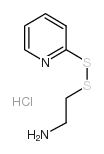56-17-7
| Name | Cystamine dihydrochloride |
|---|---|
| Synonyms |
Ethanamine, 2,2'-dithiobis-, hydrochloride (1:2)
CYSTAMINIUM DICHLORIDE aed cystaminedihcl OYSTAMINE DIHYDROCHLORIDE 2,2'-dithiodiethanamine dihydrochloride 2,2'-diaminodiethyl disulfide dihydrochloride CystamineHcl 2,2'-Disulfanediyldiethanamine dihydrochloride 2,2'-dithiodiethylamine dihydrocloride cystamine 2hcl usafcb-34 MFCD00012905 EINECS 200-260-7 2,2'-Dithiobis[ethylamine] dihydrochloride 2,2'-diaminoethyl disulfide dihydrochloride |
| Description | Cystamine (dihydrochloride) is the disulfide form of the free thiol, cysteamine. Cystamine is an orally active transglutaminase (Tgase) inhibitor. Cystamine also has inhibition activity for caspase-3 with an IC50 value of 23.6 μM. Cystamine can be used for the research of severals diseases including Huntington's disease (HD) [1][2][3]. |
|---|---|
| Related Catalog | |
| Target |
Caspase 3:23.6 μM (IC50) |
| In Vitro | Cystamine (dihydrochloride) has inhibition activity for caspase-3 with an IC50 value of 23.6 μM[1]. Cystamine (0-500 μM; 0-16 h) inhibits recombinant active caspase-3 in a concentration-dependent manner[1]. Cystamine (250 μM; 10 h) robustly increases the levels of glutathione[1]. Western Blot Analysis[1] Cell Line: Human neuroblastoma SH-SY5Y cells Concentration: 250, 500 μM Incubation Time: 0-16 h Result: Inhibited the MG132-mediated activation of caspase-3. Inhibited the H2O2-mediated activation of caspase-3. Inhibited caspase-3 activity in a tTG-independent manner. |
| In Vivo | Cystamine (dihydrochloride) (oral, i.p.; 112, 225 mg/kg) reduces Tgase activity and GGEL levels, lessens the behavioral and neuropathological severity, and extends survival in R6/2 transgenic HD mice[2]. Animal Model: R6/2 transgenic HD mice[2] Dosage: 112, 225 mg/kg Administration: Intraperitoneal or oral, daily Result: Significantly extended survival, improved body weight and motor performance, delayed the neuropathological sequela and significantly altered the levels of Tgase activity and N(Sigma)-(gamma-L-glutamyl)-L-lysine (GGEL) levels. |
| Density | 1.172g/cm3 |
|---|---|
| Boiling Point | 264.8ºC at 760mmHg |
| Melting Point | 217-220 °C (dec.)(lit.) |
| Molecular Formula | C4H14Cl2N2S2 |
| Molecular Weight | 225.203 |
| Exact Mass | 223.997543 |
| PSA | 102.64000 |
| LogP | 3.28980 |
| Stability | Stable. Incompatible with strong oxidizing agents. |
| Water Solubility | soluble |
CHEMICAL IDENTIFICATION
HEALTH HAZARD DATAACUTE TOXICITY DATA
|
| Symbol |

GHS07 |
|---|---|
| Signal Word | Warning |
| Hazard Statements | H302 |
| Personal Protective Equipment | dust mask type N95 (US);Eyeshields;Gloves |
| Hazard Codes | Xn:Harmful; |
| Risk Phrases | R22;R36/37/38 |
| Safety Phrases | S37/39-S26-S36/37/39 |
| RIDADR | NONH for all modes of transport |
| WGK Germany | 3 |
| RTECS | KR7260000 |
| HS Code | 29309070 |
| Precursor 1 | |
|---|---|
| DownStream 9 | |
| HS Code | 29309070 |
|---|


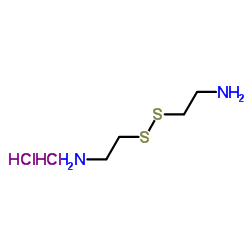
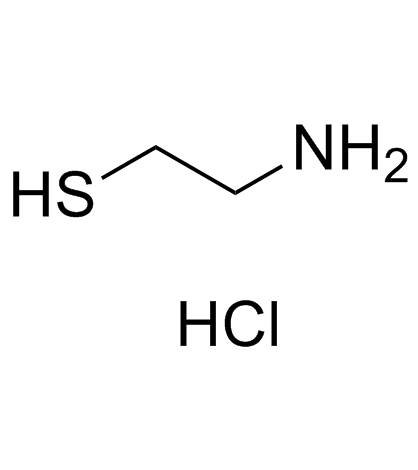
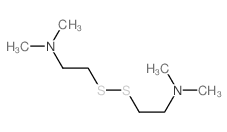
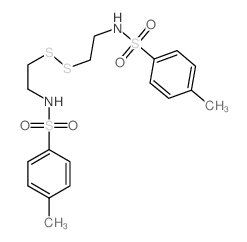
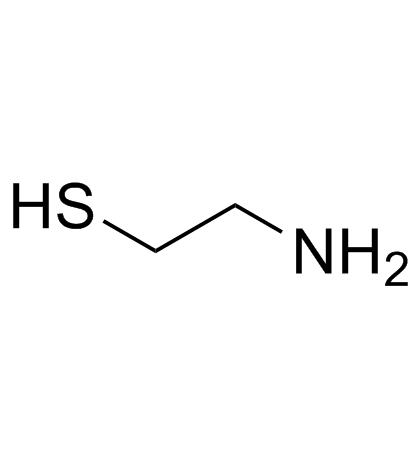

![Ethanamine,2-[(phenylmethyl)thio]- structure](https://image.chemsrc.com/caspic/006/1007-54-1.png)
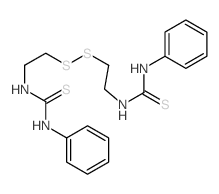
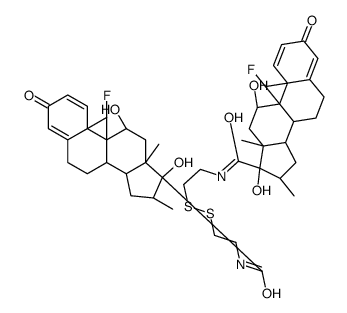
![1-(2-chloroethyl)-3-[2-[2-[(2-chloroethyl-nitroso-carbamoyl)amino]ethy ldisulfanyl]ethyl]-1-nitroso-urea structure](https://image.chemsrc.com/caspic/485/77469-44-4.png)
